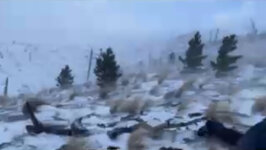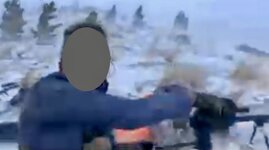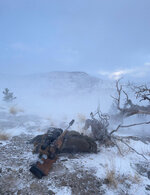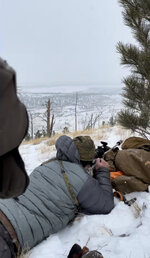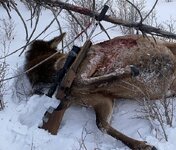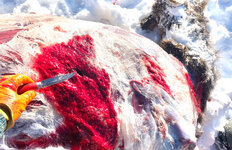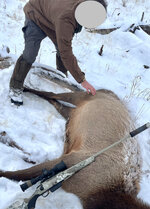@solarshooter
Let me back up and clarify. What I wrote in the last few reply’s about making decisions based on the totality of all shots and situations, is how
I do it, and what results in the best outcomes overall from what I see from myself and others in total, over lots of animals and extreme conditions at times.
When people I hunt and shoot with use using equipment that is specialized, tailored, or chosen for on specific aspect, inevitably as soon as they are in a situation that isn’t that specific one, the failure rate is high.
Here are a couple of screen shots during a partner and I killing elk in over 60mph winds and blowing snow- mine at 560 yards, and his at 408y and 288y IIRC-
View attachment 715887
View attachment 715888
After the shot when it started to clear up a bit-
View attachment 715889
I was shooting a 6mph wind gun, and 100% would not have traded it for an 8mph, 7mm or 300 mag of any type. Shootability matters.
Same here of a buddy right after he shot an elk at 860 yards (might have been 862y), in 12 mph gusting, cross canyon winds with a 7mph gun- a 6.5cm. He neither would would have traded it for his 300 WM he also has. Shootability matters.
View attachment 715894
If someone wants to make caliber/cartridge/bullet/rifle choices on some unlikely outlier of a situation- that they themselves would probably never even attempt to begin with, and ignore the cost of that choice in other situations- ok. People can do what they want. However, that is a sub par way to do it when looked at broadly across time and space. I use what I use in each situation because it results in the highest chance of success across the board in all scenarios that are legitimate.

